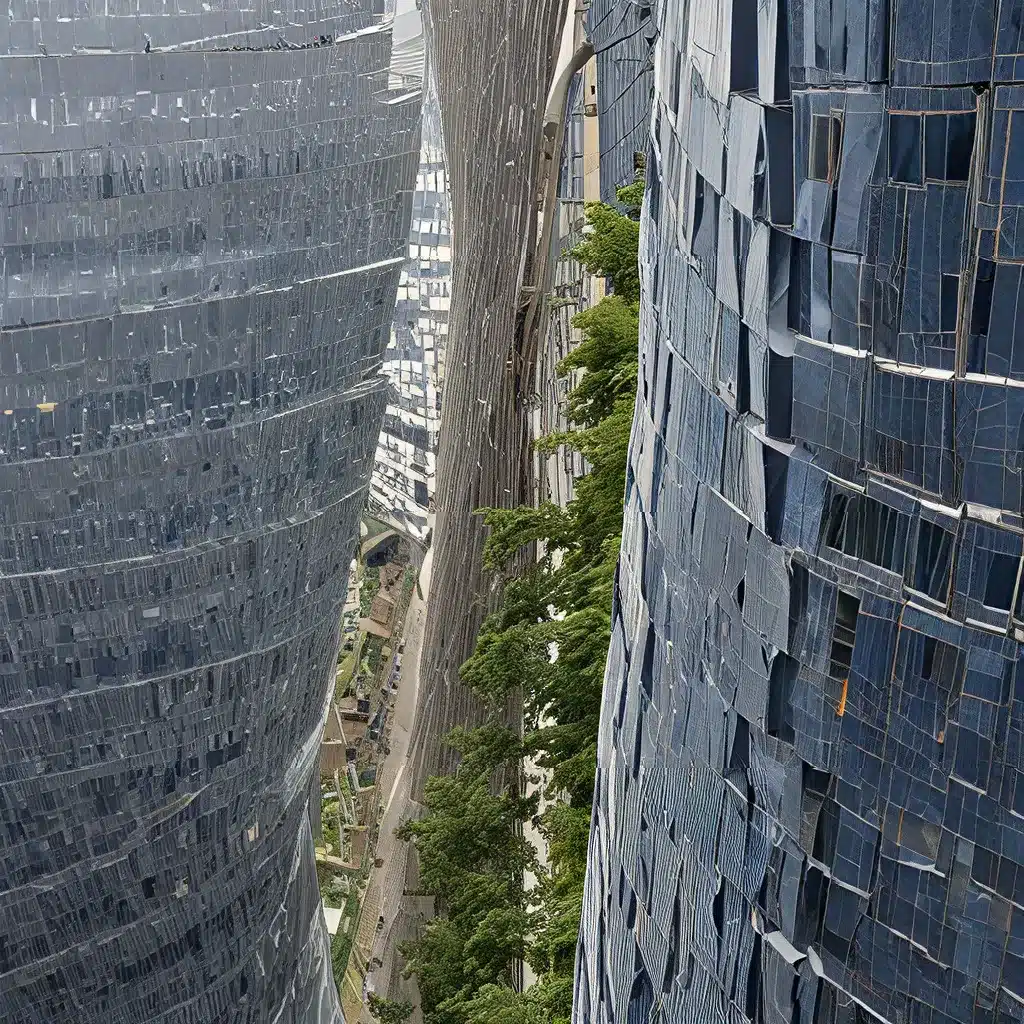
The Greening of Our Buildings
I’ve always been fascinated by the intersection of technology, sustainability, and the built environment. As someone who cares deeply about the future of our planet, I’ve been keenly following the green building movement and its potential to transform the way we design, construct, and operate our physical spaces.
From the Anasazi of the American Southwest to the cutting-edge eco-cities of today, the drive to create more environmentally responsible and resource-efficient buildings has a rich and storied history. The oil price increases of the 1970s and the growing environmental movement kicked this pursuit into high gear, spawning a wave of innovation and experimentation that continues to this day.
The Evolving Landscape of Green Building
As I delve into the world of renewable energy and its role in the built environment, I’m struck by the sheer breadth of the topic. It’s not just about solar panels and wind turbines – it’s a holistic approach that considers every aspect of a building’s life cycle, from siting and design to construction, operation, maintenance, renovation, and even deconstruction.
The EPA has been a key player in this space, with a dedicated Green Building Workgroup that coordinates the agency’s efforts to provide resources and guidance to the building and development sectors. Their Green Building Strategy lays out a comprehensive vision for reducing the environmental impact of our built spaces.
But it’s not just government agencies driving this change. Private companies, universities, and industry groups are also making significant investments in green building research, with a focus on areas like energy efficiency, materials and resources, and indoor environmental quality.
The Policy Landscape: Incentives and Regulations
As the green building movement has gained momentum, policymakers have responded with a range of incentives and regulations aimed at encouraging more sustainable practices. At the federal level, initiatives like the Federal Commitment to Green Building have set the tone, establishing a clear commitment to environmentally responsible building practices.
At the state and local levels, we’re seeing a patchwork of policies that reflect the unique needs and priorities of different communities. Some jurisdictions offer tax credits or rebates for incorporating renewable energy technologies, while others have implemented building codes that mandate certain green building standards.
The Challenges and Opportunities
Of course, the path to a more sustainable built environment is not without its challenges. Cost is often cited as a barrier, with the perception that green building techniques and technologies come with a premium price tag. But as the industry continues to mature and scale, I’m confident that we’ll see these costs come down, making green building more accessible to a wider range of projects.
Another hurdle is the complexity of the built environment itself. Each building is a unique system, with its own set of considerations and constraints. Developing universal standards and best practices can be a real challenge, requiring a nuanced, case-by-case approach.
But for every challenge, there’s an opportunity. The growing demand for energy-efficient, healthy, and environmentally-friendly spaces is driving innovation across the sector. And as more people become aware of the environmental, economic, and social benefits of green building, I believe we’ll see a groundswell of support that will help propel the movement forward.
The Role of Renewable Energy
At the heart of the green building revolution is the integration of renewable energy technologies. From rooftop solar panels to geothermal heating and cooling systems, these clean, sustainable power sources are transforming the way we think about the built environment.
By reducing our reliance on fossil fuels and minimizing greenhouse gas emissions, renewable energy solutions play a crucial role in making our buildings more environmentally responsible. And as the technology continues to evolve and become more cost-effective, I believe we’ll see these solutions become increasingly ubiquitous in new construction and retrofitting projects.
The Future of Green Building
As I look to the future, I’m filled with a sense of optimism and excitement. The green building movement is not just a passing fad, but a fundamental shift in the way we approach the design, construction, and operation of our built spaces. And with renewable energy at the forefront of this transformation, I believe we’re poised to create a more sustainable, resilient, and livable world for generations to come.
Of course, there’s still a lot of work to be done. Ongoing research, evolving policies, and changing consumer preferences will all play a role in shaping the future of green building. And as with any complex issue, there will likely be debates and differing perspectives along the way.
But one thing is clear: the momentum is there, and the potential is immense. By embracing the principles of green building and leveraging the power of renewable energy, I believe we can create a built environment that is not only better for the planet, but also better for the people who inhabit it.
So, what does the future hold? Only time will tell. But one thing I know for sure: I’m excited to be a part of this journey, and I can’t wait to see what the next chapter has in store.

